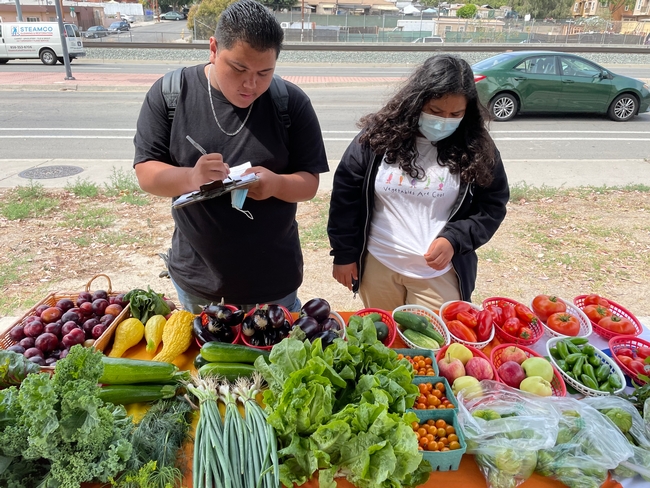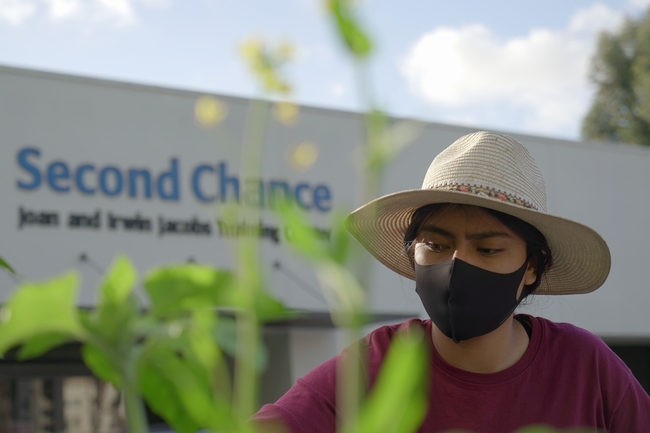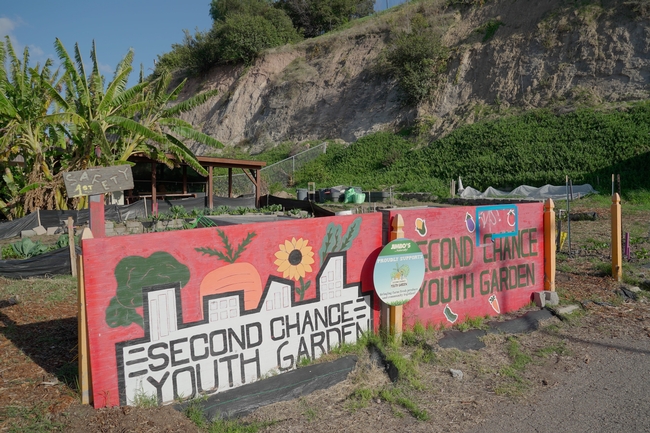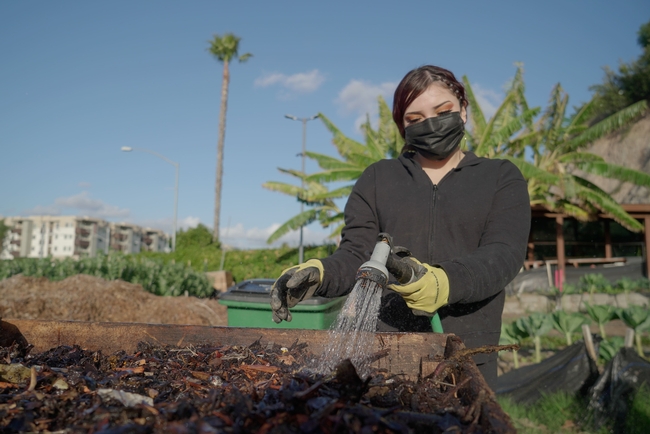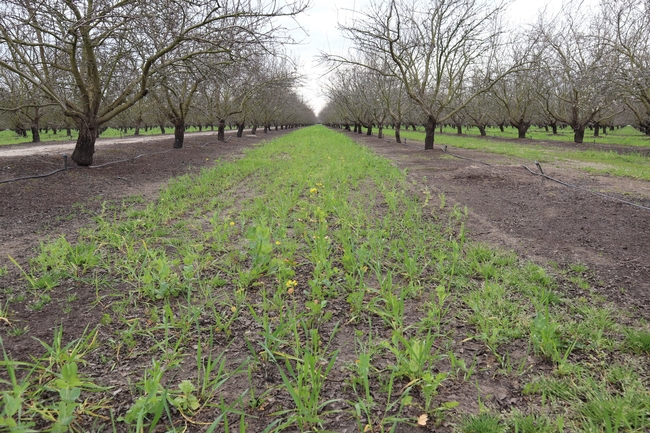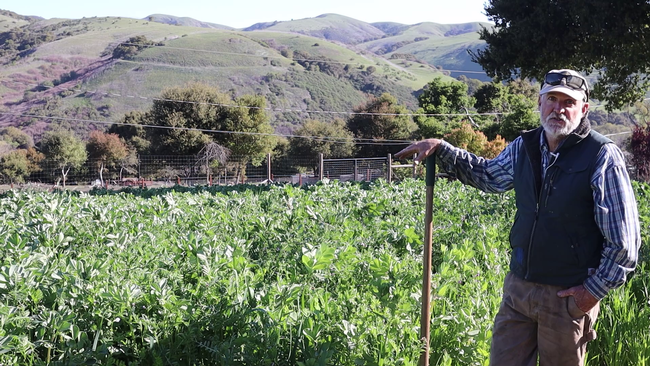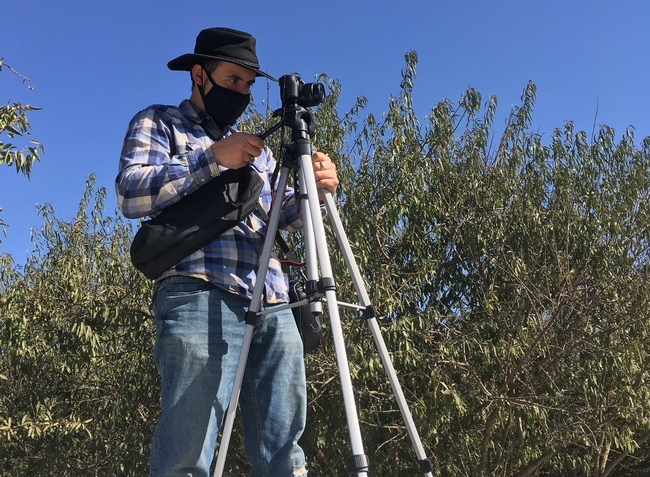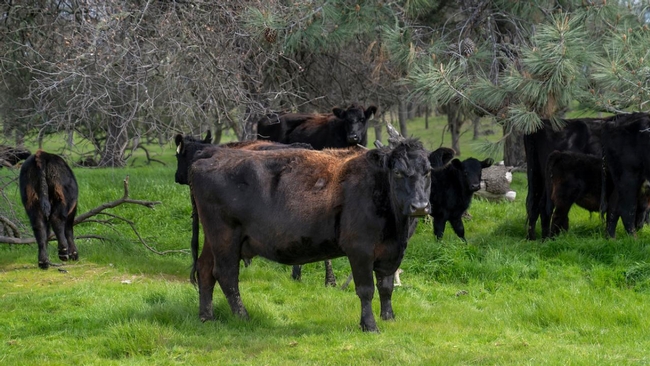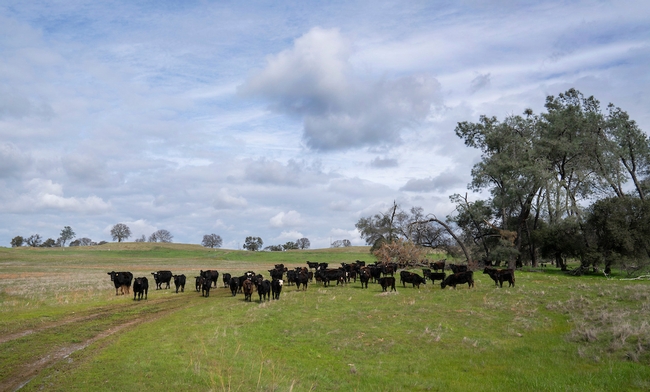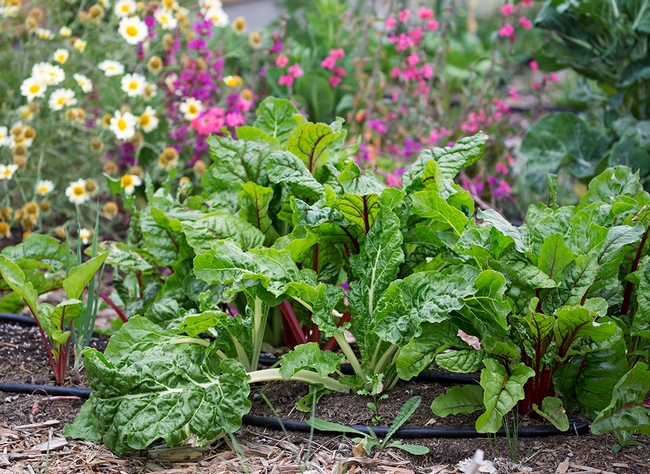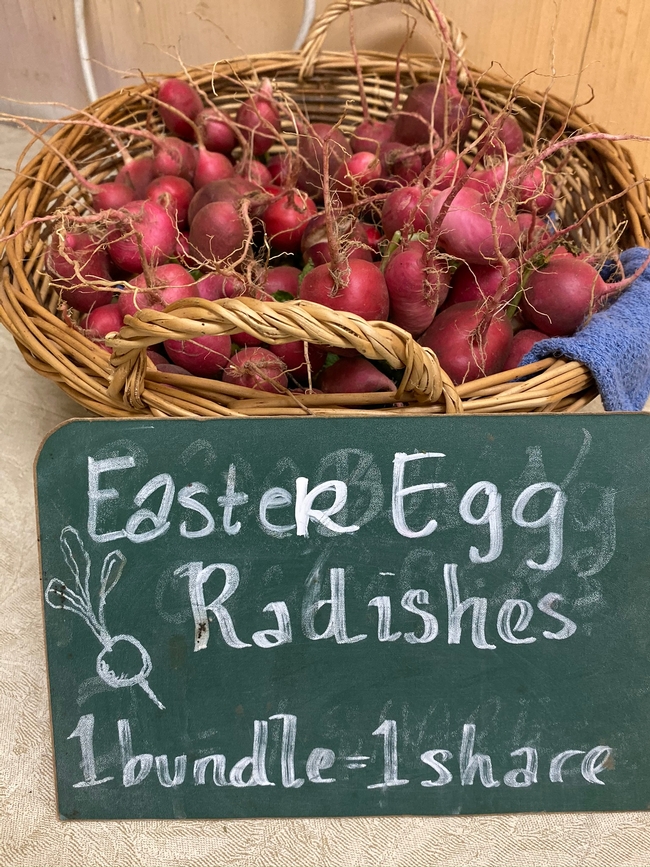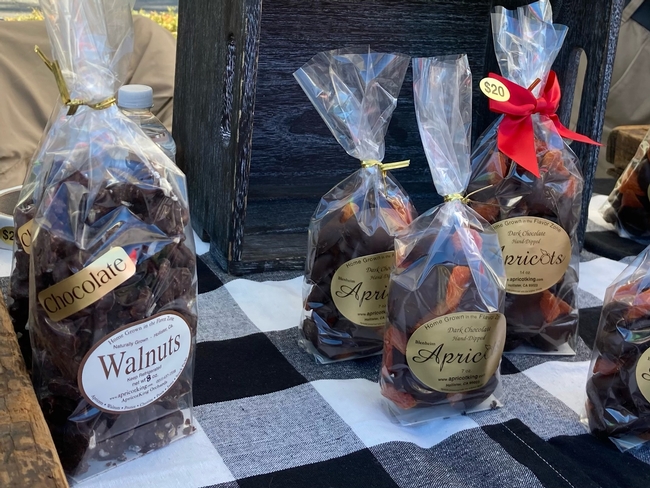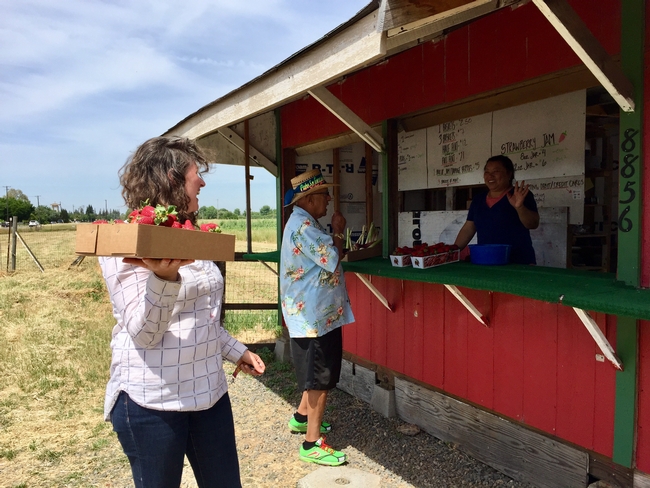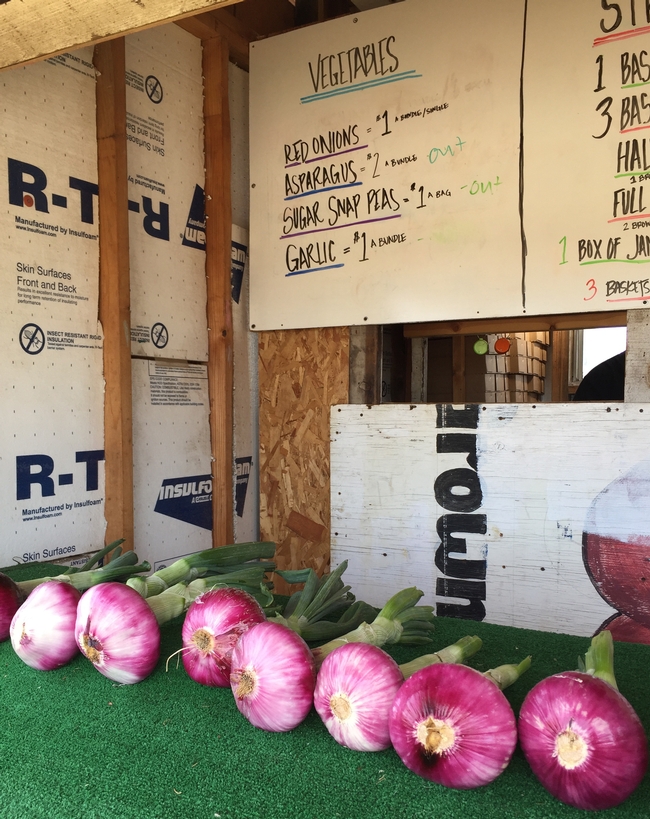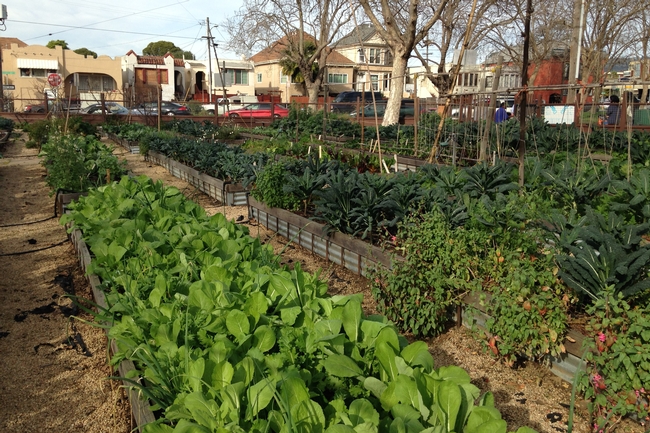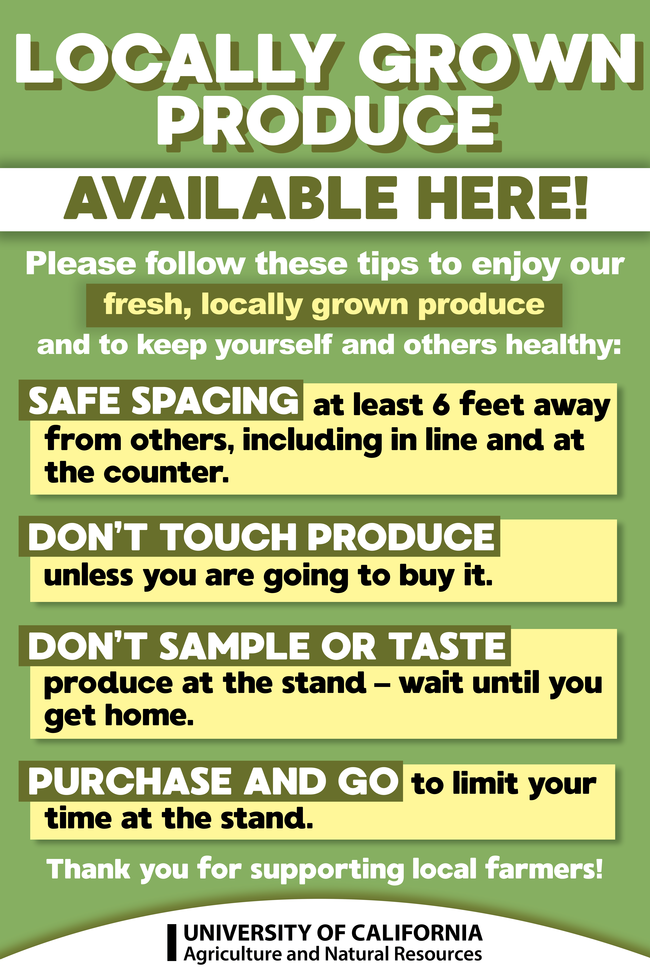Posts Tagged: food systems
Youth-run garden provides 10,000 pounds of produce for San Diego families
UC SAREP's Sustainable Agriculture and Food Systems grant helps support Second Chance garden
Fifteen-year-old Xavier knows the anger within him will never leave. “I can't ever get rid of it,” he said.
“I've always wanted to just fight for no reason; I just had an anger issue, losing my temper quick with people,” added Xavier, a ninth-grader in San Diego County. “I have high expectations of myself.”
Xavier is working to keep his emotions under control, and he has found a sense of calm through his volunteer work. He was an intern – and then a peer supervisor – in the youth-run garden of Second Chance, a San Diego-based organization that works to break the cycles of poverty and incarceration by providing housing and job training to adults and young people.
Operating their garden as a small farm business, youth in the program, ages 14 to 21, offer produce to the community through their farm stand and a CSA (Community Supported Agriculture) model.
“The project incorporates a ‘farm to fork' approach in which youth not only experience how to grow food, but how to cook and eat healthfully,” said Gail Feenstra, director of the University of California Sustainable Agriculture Research and Education Program, which has a grant program that funds research and education projects – such as the youth garden – supporting sustainable food systems.
“Second Chance works primarily with youth in communities of color, providing them with training and also helping them develop confidence in themselves,” Feenstra said.
Filling a critical need for fresh produce
Caelli Wright, program manager of the Second Chance youth garden, said that grant funds from SAREP – a program of UC Agriculture and Natural Resources – have been used to purchase the supplies needed to sustain the program. The garden has filled a critical need for produce during the COVID-19 pandemic.
“After the pandemic hit, we recognized the increased need for fresh food in our neighborhoods,” Wright said. “That need was already there – southeast San Diego is considered a ‘food swamp' or ‘food apartheid', if you will – and with the onset of COVID, that need just escalated with unemployment and complications in our food production systems.”
Through a partnership with UC San Diego Center for Community Health and Encanto Elementary School (located down the block from the garden), donations enabled the program to give its CSA shares to about 25 families at Encanto. Over the course of the pandemic, the youth have grown 10,000 pounds of produce to donate.
At the same time, the program helps the young participants grow. For Xavier, being outdoors with peers empowered him to develop positive relationships. Previously, as a student in a charter school program, he was not accustomed to interacting with people and groups. Volunteering in the youth garden has given him a fresh perspective and understanding of others.
“Learning to be patient with people and [to] accept sometimes that if I don't know something, I need to ask about it, because I used to be so in my ego that I thought I knew everything,” Xavier explained. “But I don't know everything – I just learned to accept some things…that's just being part of life. And that's something that the garden has helped me with, personally.”
Opportunities for personal, social growth
Developing – and redeveloping – social skills are especially important for students, as they return from the disconnections associated with remote learning.
“Right now, with a lot of students facing the aftermath of COVID and being restricted to learning at home and not getting as much social interaction in their daily lives, it's led to a lot of challenges, mental health-wise, and social and emotional learning-wise,” Wright said. “The garden program provides that opportunity that some youth have been missing out on.”
In southeast San Diego, such crucial opportunities for personal growth and career exploration are harder to come by, and Second Chance started the garden in 2012 to give youth a unique work experience and valuable skills. About 400 young people have participated in the program.
“The youth that we serve are coming from low-income neighborhoods that are underserved with resources,” Wright said. “They just are not exposed to the same opportunities [as those in higher-income areas] to build skills or be ready for the workforce or to reach higher education – so that's where our program comes in and helps deliver those needed services.”
Xavier, who originally came to the garden because he heard that landscaping could be a lucrative career, recently finished his second stint as a peer supervisor in the youth garden. With his new skills, he and his cousin are looking to start a business of their own, cutting grass and doing yardwork in their community.
And, late last month, Xavier transferred to a more traditional high school environment.
“Being in a charter school after two, three years,” he said, “I've realized I miss being around more people.”
Cover cropping season has begun: Free recorded webinars, demos available
Cover crops, typically planted in early fall, deliver a host of agricultural and conservation benefits. But many growers have gone away from planting them due to technical challenges and extra costs associated with the practice. In partnership with the Contra Costa County Resource Conservation District, two University of California Cooperative Extension advisors collaborated to support farmers' cover cropping efforts and reduce costs.
Kamyar Aram, UCCE specialty crops advisor for Contra Costa and Alameda counties, and Rob Bennaton, UCCE Bay Area urban agriculture and food systems advisor, developed online project content for a free educational series on cover cropping, which entails growing non-cash crops to add beneficial biomass to soils.
The series – comprising 10 webinars and five virtual farm-site visits – features UC farm and urban agriculture advisors and some of California's foremost experts on cover cropping. It helps growers overcome their hesitations about the practice, which provides benefits such as alleviating compaction, improving water retention and increasing organic matter and nutrients in the soil.
“Our site visit videos include a diversity of cropping systems, operation types and scales, and levels of experience with cover crops, so we really capture a variety of perspectives,” Aram said. “Now, with the videos online, I hope that they will serve as tools for other farm educators, as well as a resource for growers directly.”
When the COVID-19 pandemic scrapped plans for in-person workshops and visits, the series organizers pivoted to online webinars, starting in fall 2020, which drew more than 150 participants. The recorded videos – which cover basic methods, financial assistance, tips for orchards and vineyards and more – expanded the potential reach and impact of the series far beyond Contra Costa County.
“Each video, whether it's a webinar recording or a virtual site visit, emphasizes different aspects, and the titles are designed to help viewers find the resources they are most likely to benefit from,” said Aram. “There really is something for everyone.”
In particular, the organizers of the series recognized the importance of including technical and extension support to urban and semi-urban farmers in the East Bay and beyond.
“We wanted to make sure to include practical support from fellow farmers that was both accessible and relevant to our diverse small and urban farmers,” said Julio Contreras, UCCE community education specialist. “This meant covering topics like seeding with spreaders or by broadcasting – using small equipment and machinery or no-till systems – and even cover cropping in planter boxes.”
Aram and Bennaton also credited their Contra Costa Resource Conservation District partners: Ben Weise, agriculture conservation manager; Derek Emmons, agriculture conservation coordinator; and Chris Lim, executive director.
The project, funded by a Specialty Crops Block Grant from the California Department of Food and Agriculture, was also made possible by the generous contributions of time and expertise from presenters and hosts of farm-site visits, according to Aram.
“I hope that the videos will enjoy a long life online; they really contain a wealth of knowledge,” he said.
The series is available for view at http://ucanr.edu/CoverCropsCoCo.
California’s local meat suppliers struggle to stay in business
UC Davis report suggests ways to build resilience
The University of California, Davis, Food Systems Lab has released a white paper showing the need to support California's small and mid-scale meat suppliers and processors in order to build a more resilient meat supply chain. It describes how the meat supply chain and rural economies could benefit from regulatory changes and more collaboration among producers and other stakeholders in the system.
The pandemic shut down meat processing plants in 2020, as did recent ransomware attacks on JBS, the nation's largest meat supplier. Report authors said this highlights the need to support small- and mid-scale suppliers.
“COVID and the ransomware attacks put a spotlight on how the concentration of the meat supply chain increased vulnerability in the food system,” said report co-author Tom Tomich, founder of the UC Davis Food Systems Lab and distinguished professor in the Department of Environmental Science and Policy. “We need to level the playing field so small- and mid-scale farms have an easier way to bring their product to market.”
The report says the lack of access to slaughter facilities, limited capacity of cut and wrap facilities, and concentration of marketing channels create conditions in which small- and mid-scale farms and ranches struggle to stay in business.
“These challenges are exacerbated by policies that tilt the playing field against small operators. Fortunately, new state and national legislation and programs are developing that could increase resilience in our food systems,” says Michael R. Dimock, Roots of Change program director and lead author for the report. “We need cities and counties to help fix the problems because local land use policies often impede development of resilient supply chains.”
Lack of access and limited capacity
Smaller ranchers in California have limited access to slaughter and processing facilities. In the last 50 years, California has lost half of its federally inspected meat processing plants, and the remaining facilities are unable to meet demand. Many of the 46 USDA-certified slaughter plants operating in California are closed to smaller producers.
“This means that smaller ranchers must drive hundreds of miles to reach a facility or have to wait months due to limited capacity,” said Tomich.
The report said a combination of federal, state and private investments could provide a broader geographic distribution of plants of differing scales. It also suggests expanding mobile, on-farm slaughter operations for sheep, goats and hogs, similar to those for beef.
Regulatory barriers and opportunities
Complex inspection requirements and other regulatory barriers make it difficult for small- and mid-scale producers to compete with big suppliers. The report suggests California create its own meat inspection program equivalent to the federal program to serve smaller ranchers. Prioritizing public procurement of local, high-value meat would also help expand market access for smaller producers.
Broader benefits of smaller operators
The report notes other beneficial roles of small- and mid-scale livestock operations, apart from the potential to increase resilience in our food system. Livestock grazing is a cheap and effective way to reduce wildfire risk. Supporting local meat processing also helps rural economies and creates community-based jobs.
The report was based on 27 interviews with people representing a wide spectrum of activities and points of view within the meat supply chain throughout the state. Authors are Courtney Riggle, Allan Hollander, Patrick Huber and Thomas Tomich of the UC Davis Food Systems Lab, and Michael R. Dimock with Roots of Change.
Funding for the study came from the TomKat Foundation and USDA Hatch Program.
New food-safety guide outlines laws and best practices for urban farmers
Californians growing food in cities now have help understanding the food safety laws that apply to them. A free publication containing California-specific information on rules and regulations for urban farmers was recently published by the University of California Agriculture and Natural Resources.
Growing fresh fruits and vegetables in community gardens, backyards and rooftops helps provide more food for urban communities, creates jobs and teaches people about the value of healthy foods, according to Jennifer Sowerwine, lead author and UC Cooperative Extension specialist at UC Berkeley.
"There are a growing number of backyard and community producers who are scaling up to sell some of what they grow,” said Rachel Surls, UC Cooperative Extension sustainable food systems advisor based in Los Angeles County and co-author. “We hope this guide will help them navigate the regulations and learn best practices for keeping food safe for consumers."
“California Urban Agriculture Food Safety Guide” provides urban food producers with an overview of food safety laws and regulations that may impact their operations. To help minimize the risk of contamination of foods during their production and exchange, it also provides best practices, or Good Agricultural Practices (GAPs).
"People donating produce grown or gleaned from urban environments will learn what laws may apply to them, and practical steps they can follow to minimize the risk of foodborne illness from urban-produced foods,” Sowerwine said.
The 72-page guide covers fresh produce safety, urban soils safety, as well as food safety considerations for eggs, poultry and small livestock in the urban environment. The authors also point out which aspects of the Food Safety Modernization Act apply to urban farms, California laws that apply, record keeping requirements, information on working with gleaners, how to register as a community supported agriculture (CSA) organization, permitting requirements, and how to develop a food safety plan.
Urban farmers can do a food safety assessment of their own farms using a check list included in the publication.
The guide was produced by Sowerwine; Christina Oatfield, Sustainable Economies Law Center policy director; Rob Bennaton, UC Cooperative Extension urban agriculture advisor; Alda Pires, UC Cooperative Extension in the UC Davis School of Veterinary Medicine; Surls; Valerie Borel, UC Cooperative Extension program representative; and Andre Biscaro, UC Cooperative Extension agriculture and environmental issues advisor.
The publication “California Urban Agriculture Food Safety Guide: Laws and Standard Operating Procedures for Farming Safely in the City” is available for free download at https://anrcatalog.ucanr.edu/pdf/8660.pdf.
Urban ag supplies fresh fruits and vegetables, part of a healthy diet
Even as Californians shelter in place to contain the novel coronavirus that causes COVID-19, nutritious food remains vital to the health and well-being of our communities.
“Eating fruits and vegetables is known to benefit our overall health and help our immune system,” said Lorrene Ritchie, director of the UC Nutrition Policy Institute. “At a time when we need to be especially vigilant about staying healthy, eating healthy is essential.”
Farms, farm stands and farmers markets are listed as “essential businesses” in the state shelter-in-place order because they are important parts of the food supply. Urban farms are included in this category. As large produce distributors struggle to switch from selling large quantities to restaurants, schools and institutions to supplying supermarkets, these small businesses may offer a better selection of fresh foods, and may be closer to homes and less crowded.
To help minimize exposure and risk of spreading of the virus, urban farms need to follow some key guidelines from the CDC , said Jennifer Sowerwine, UC Cooperative Extension metropolitan agriculture and food systems specialist in the Department of Environment, Science, Policy and Management at UC Berkeley.
UC Cooperative Extension has compiled a list of resources for farmers, community gardeners and other people working in the food system to ensure that they can continue supplying fresh, healthy and affordable food to Californians.
“Social distancing, heightened health and hygiene practices and cleaning and disinfecting reduce the risk,” said Sowerwine.
Although eating a nutritious diet can boost our immunity, the Los Angeles Times reported produce sales plummeted by 90% or more at Southern California produce markets after the statewide shelter-in-place rules went into effect.
“It's worrisome to see that sales of fruits and vegetables are dropping so sharply, but not surprising,” said Rachel Surls, UC Cooperative Extension sustainable food systems advisor for Los Angeles County. “As people shop during the crisis, they may be prioritizing groceries that can be stored for a longer time in the fridge or pantry. And they may be on a very limited food budget, even more so than usual, so they are likely prioritizing essentials like bread and rice and baby formula.”
To support farmers in California, the UC Sustainable Agriculture Research and Education Program created a directory at http://www.calagtour.org for consumers to find local farms to purchase produce directly.
For families who have lost jobs and income, the risk of food insecurity increases. Some families could supplement their food from gardens and urban agriculture during this crisis.
Consumers must practice safety, too, when visiting farmers markets and farm stands. UC Cooperative Extension small farm advisor Ruth Dahlquist-Willard explained, "Things like keeping the minimum six-foot distance from customers, not touching any produce that you're not planning to buy, leaving as soon as you've made a purchase and washing the produce when you get home would be some good guidelines."
The virus is thought to be spread mainly from person to person, however there is evidence that COVID-19 can last for days on hard surfaces, thus the need to ramp up good health and hygiene practices, social distancing and cleaning and sanitizing of surfaces.
University of California research and extension faculty have compiled a list of helpful fact sheets and resources for farmers, community gardeners and other food system workers to ensure fresh, healthy and affordable food for communities across the state:
- Food-related resources for consumers and members of the food industry for COVID-19
- on the UC Davis Food Safety website.
- Sowerwine's PowerPoint presentation Safe Handling Practices for Fresh Produce in a Time of Coronavirus Disease 2019 (COVID-19) for urban farmers.
- A set of policies and procedures for safe food handling at the farm during COVID-19 provides step-by-step instructions for applying new food and health precautions on the farm including checklists, standard operating procedures and signage posting guidelines for preventing the spread of infection.
- COVID-19 safety guidelines for farm stands.
- Handouts for safe food-handling at home that can be distributed to customers receiving food from the farm.
All of these resources are posted on the UC Urban Agriculture website at https://ucanr.edu/sites/UrbanAg.
“During this challenging time, I am heartened by the quick and thoughtful responses by many extension, grassroots and institutional efforts, including Community Alliance with Family Farm's COVID-19 Responses and Resources for California Family Farms, Mutual Aid organizations where groups of young, healthy and lower-risk people are bringing food and services to vulnerable people who shouldn't be in public at all, and Bayareafood.info that seeks to support local restaurants, farmers, and food systems workers as they weather this latest storm,” said Sowerwine. “Crisis can spawn innovation, and I am hopeful that through this, we will come out the other end with a more compassionate and resilient food system.”


